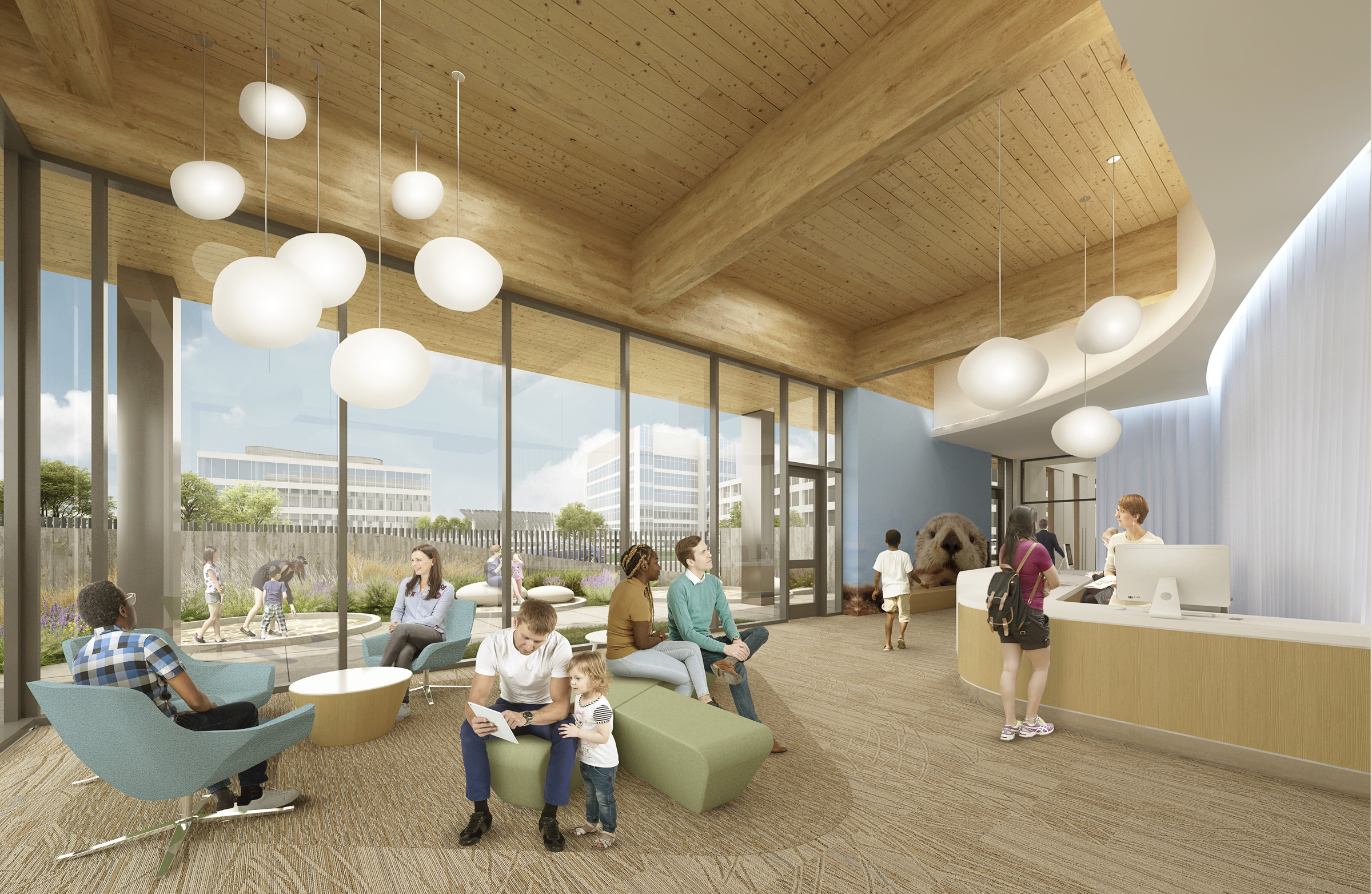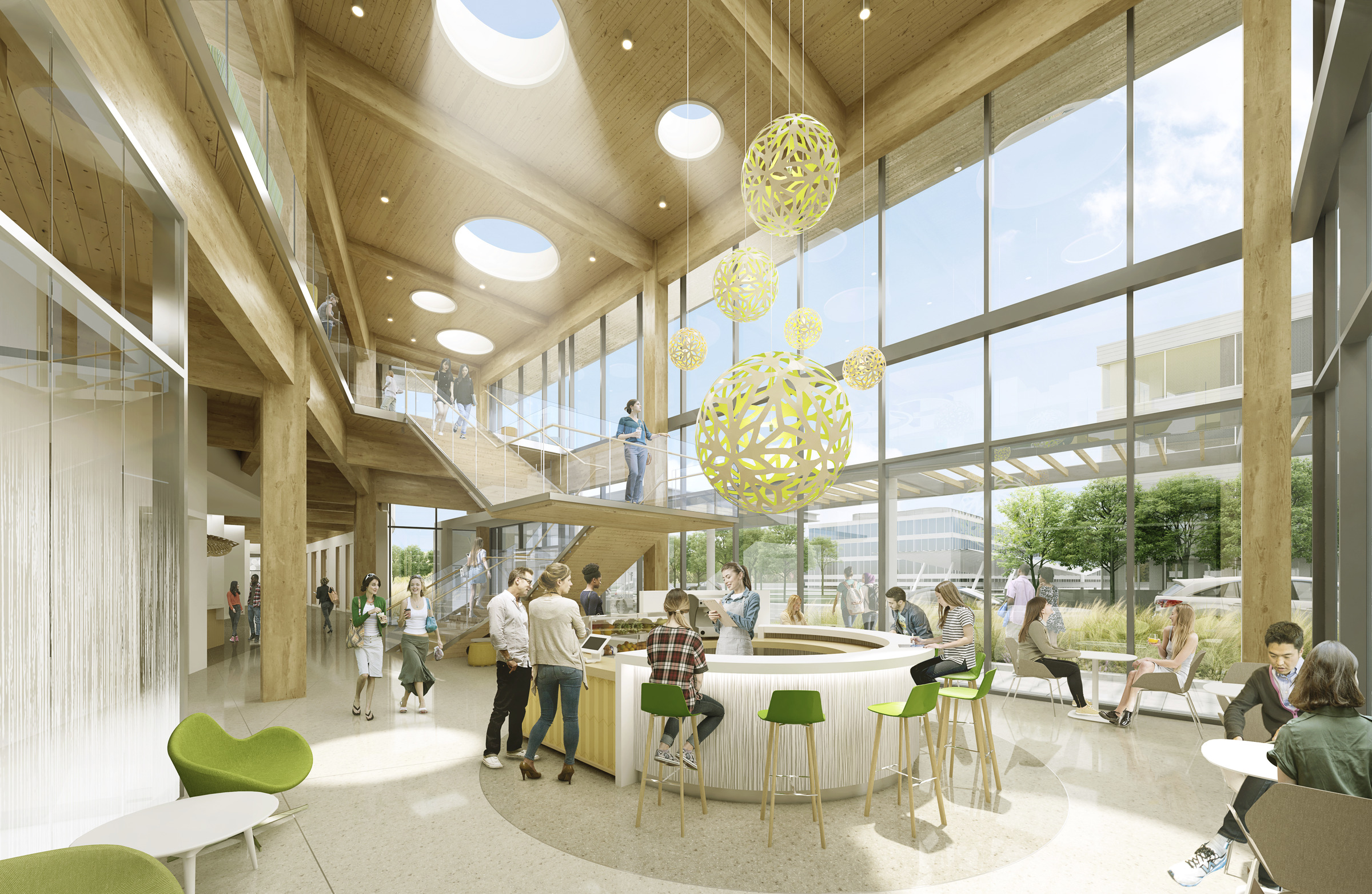Meet Tammy. She brought Michael, her 10-year-old son, to the Autism Center for a medicine and weight check. She's grateful for the designated parking and the separate garden entrance that help simplify today's visit. Michael sits on a bench in the Autism Cove. They are a bit early, so he’s having his snack. Tammy sees the main entrance, with its café and bustling people, and is relieved to have a quieter place to wait, since Michael is easily overwhelmed. When the nurse calls them inside, the lights are dim, the colors are relaxing, and everyone speaks calmly. It's going to be a good day.

Personal Perspectives
Tammy and Michael are fictional characters, but they played an integral role in Page's design competition submission for the UC Irvine Center for Advanced Care (CAC). The team created five personas as guides to take reviewers through the CAC experience from the first-person perspective. These personas reflected the area's demographics and included a medical staff doctor, an urgent care patient, a primary care patient, pediatric patients and their parents, and of course, Tammy and Michael, representing a parent and child on the autism spectrum.
Throughout the proposal, the team inserted callout boxes that contained fictional text messages between personas and their family, friends, and partners. Each highlighted the persona's experience in or reaction to different aspects of the proposed programming and design. Through the exchanges, the reader glimpses insights into what each persona values in the healthcare setting and how each might interact with the built and natural environment.

The Big Idea
Stories have always been important in architecture and design. They highlight a building’s history, people, and place. Users experience their own actions, reactions, and emotions — their personal stories — as they move through a completed project. So, it's only natural that they should be part of the development and design process.
Stories often serve as the “big idea” for a project. According to Lead Designer John Smith, "It depends on the work, but stories can come in the form of a metaphor, an image, or an experience. For this project, the personas drove decision-making at the highest level, from where to put the building to the most detailed level, like paw prints in the concrete, emphasizing UCI’s connection to nature and the surrounding marsh."
When the team wrestled with design choices, they always returned to their personas to answer questions like: How much space should be between the garage and the building? How will doctors travel from exam to treatment rooms? Where should we locate play areas for children to experience before and after visits?
"This was a design competition, so we didn't have the client's ear. But what we did have was an idea of the end-users and the stakeholders,” John says. “The personas helped us stay focused on the users’ needs and how different people would interact with space. We put ourselves in the personas’ shoes and imagined their experiences."

Empathy
As social creatures, humans have always used stories as a fundamental way to connect. Often stories are the key to empathy, which is the first step in a good design process.
"Everything became about the narrative and empathy,” says John. “From our very first day of drawing things in the studio, it really was an empathetic process. This design – when we put a name, a face, and a story with it — took on a deeper nuance and relevance."
Empathy also works the other way around, benefitting designers as they convey a message or feeling to the user. “Design is always a combination of science and art,” says Page's Medical Planning Director Mark Vaughan. “We tell the client's story. They are the hero. The personas inspired and guided us to create ideal experiences that would not only serve the diverse stakeholders but also provide UCI Health with specific reasons backing up each detail of our proposed design. Clients get excited about efficiency and cost-effectiveness, but they get passionate about the story. Stories can transcend the functional meaning of the programming."
People First
For the UCI Health Center for Advanced Care team, storytelling created a narrative arc that placed people at the center of the design. This approach helped the team visualize how space and programming would impact people's lives, leading to better design decisions and better user experiences. Storytelling is one of the most powerful tools in the architect's toolbox.
And what about Tammy and Michael? After the checkup, Michael stopped and knelt on the sidewalk. Initially distracted by a text message from the pharmacy, Tammy turned to see what had attracted Michael’s attention. With his hand carefully placed on one of the embedded paw prints, grinning from ear to ear, he looked up and said, “See?” It was indeed a good day.